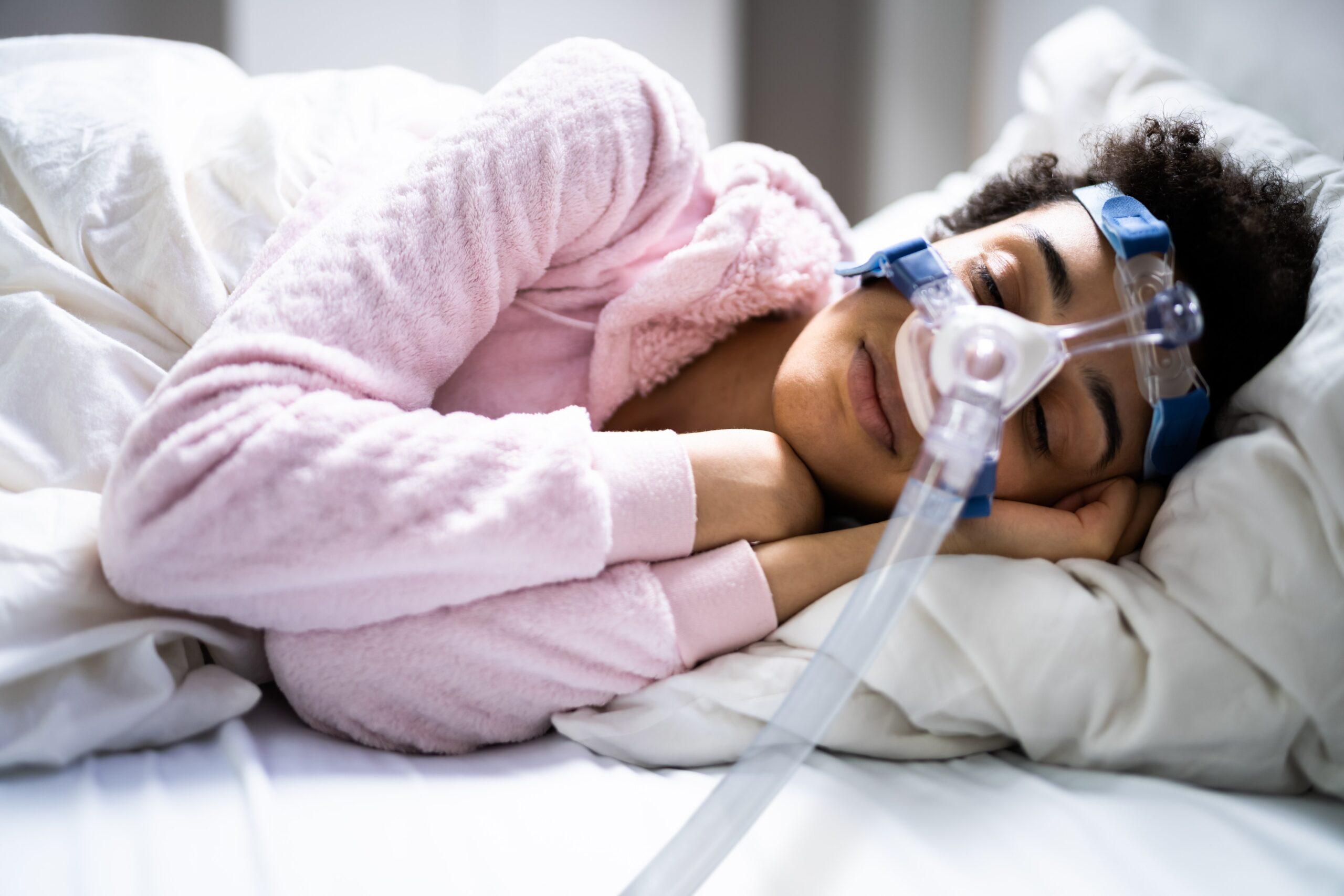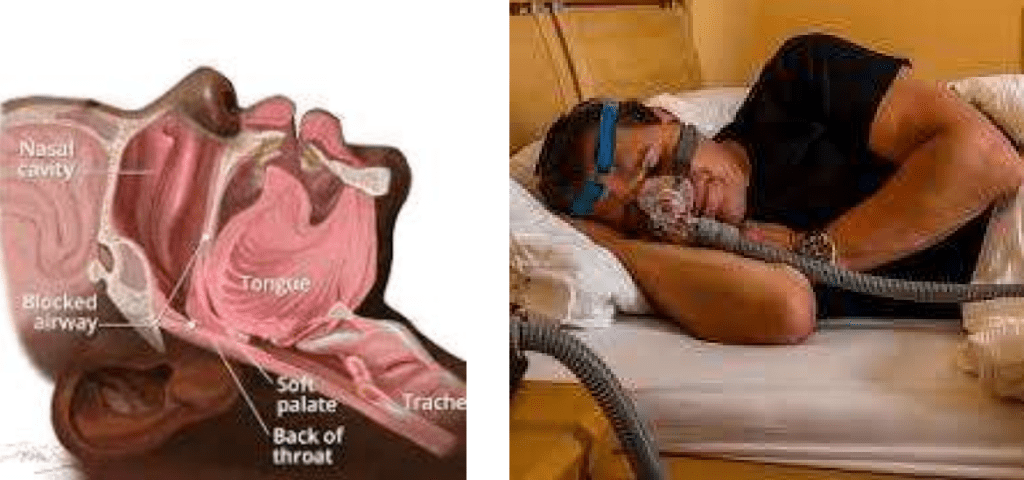
What is sleep apnea? SA is the obstruction of breathing while laying recumbent and sleeping. There are 2 types, central sleep apnea (CSA) and obstructive sleep apnea (OSA,) most commonly being obstructive type. Children will commonly have central SA due to neurological issues, but it can also happen at all ages from medications or street substances, stroke or heart failure. We will only address OSA in this article.

SYMPTOMS
While all that snores is not OSA, loud snoring is the sine qua non or hallmark sign of OSA. This happens because the muscles at the back of the throat relax and block the airway, and occurs several times during sleep, oftentimes caught by the bed partner. The pattern of a loud snore getting progressively less intense, followed by what can be perceived as a long “breathhold” (no air exchange!) is typical. There are other signs and symptoms as well: suddenly awaking with gasping or a choking sensation; morning dry mouth/throat and/or morning headaches; daytime sleepiness, crankiness or trouble focusing. High blood pressure, reflux disease, having to pee at night, and night sweats are often associated with OSA as well.
CAUSES
As mentioned before, it’s the muscles in the roof and back of the mouth that support the soft palate and the tongue that are relaxed and without adequate tone; this causes the airway opening path to narrow or collapse upon inhalation. When you are laying down there isn’t gravity or wakefulness to keep the airway open, and this is worse when laying on your back. The lack of natural ventilation causes a buildup of carbon dioxide, which signals your brain to “wake up!”, open your mouth, relieve the obstruction and take a big breath. This step is not usually remembered and is akin to the partner jabbing you to turn over. The 1 pattern repeats throughout the night and leads to sleep that is not restful. It’s best to seek help from a doctor when you become aware that the snoring is so loud it disturbs others or yourself, there is gasping for air or choking during sleep or breath pause, and excessive sleepiness while driving, watching TV or trying to work.
IS IT SERIOUS? Firstly, difficulty staying awake/alert at work or while driving can be a serious problem, risking work-related or traffic accidents. Children may have learning difficulties or behavioral issues. Secondly, because oxygen is not being delivered to vital organs during apnea, the heart can be stressed, leading to hypertension, enlarged heart, heart attack, stroke, heartbeat irregularities and high bp inside the lungs (=pulmonary hypertension, which is bad for heart.) These secondary effects of OSA can become life-threatening if treatment is delayed.
WHO GETS OSA? The anatomical make-up of a wide neck, large tongue or narrowed airway, enlarged tonsils/adenoids, older individuals, people with hypertension, smokers, diabetics, males more than females, asthmatics are all risk factors for OSA. However, the greatest risk factor is being overweight, as more than half the people diagnosed have a BodyMassIndex (or BMI) greater than 25. Other factors include alcohol and opioid use and position while sleeping (eg, on your back.)
MAKING THE DIAGNOSIS starts with a basic history and physical exam (request an in-person appointment) and possible referral to a sleep specialist. The evaluation may include an overnight evaluation in a sleep center, but this is expensive and not usually necessary. Home sleep testing is common now, easy to use and the data can be analyzed remotely. TREATMENT The mainstay is CPAP which stands for continuous positive airway pressure. This therapy delivers constant air pressure via a small bedside machine and a face or nasal mask; this gentle air pressure relieves the obstruction at the back of the throat throughout the night. The newer machines are quiet, and a variety of masks are available to suit individual comfort needs; humidifiers are also available. There are variations on the CPAP, like BIPAP and APAP, if your sleep specialist thinks they may be better for a particular situation. It is very important to communicate with your healthcare provider if you are having issues with the recommended equipment, and to not give up if the fit is not comfortable. There are other treatment options like electrical stimulation, surgical excision of palate or tonsillar tissues and jaw movement.
Respectfully Submitted,
Dr. Lan Hodges, Health Ministry
Ref: Mayoclinic.org
WebMD.com
Ncbi.nlm.nih.gov
